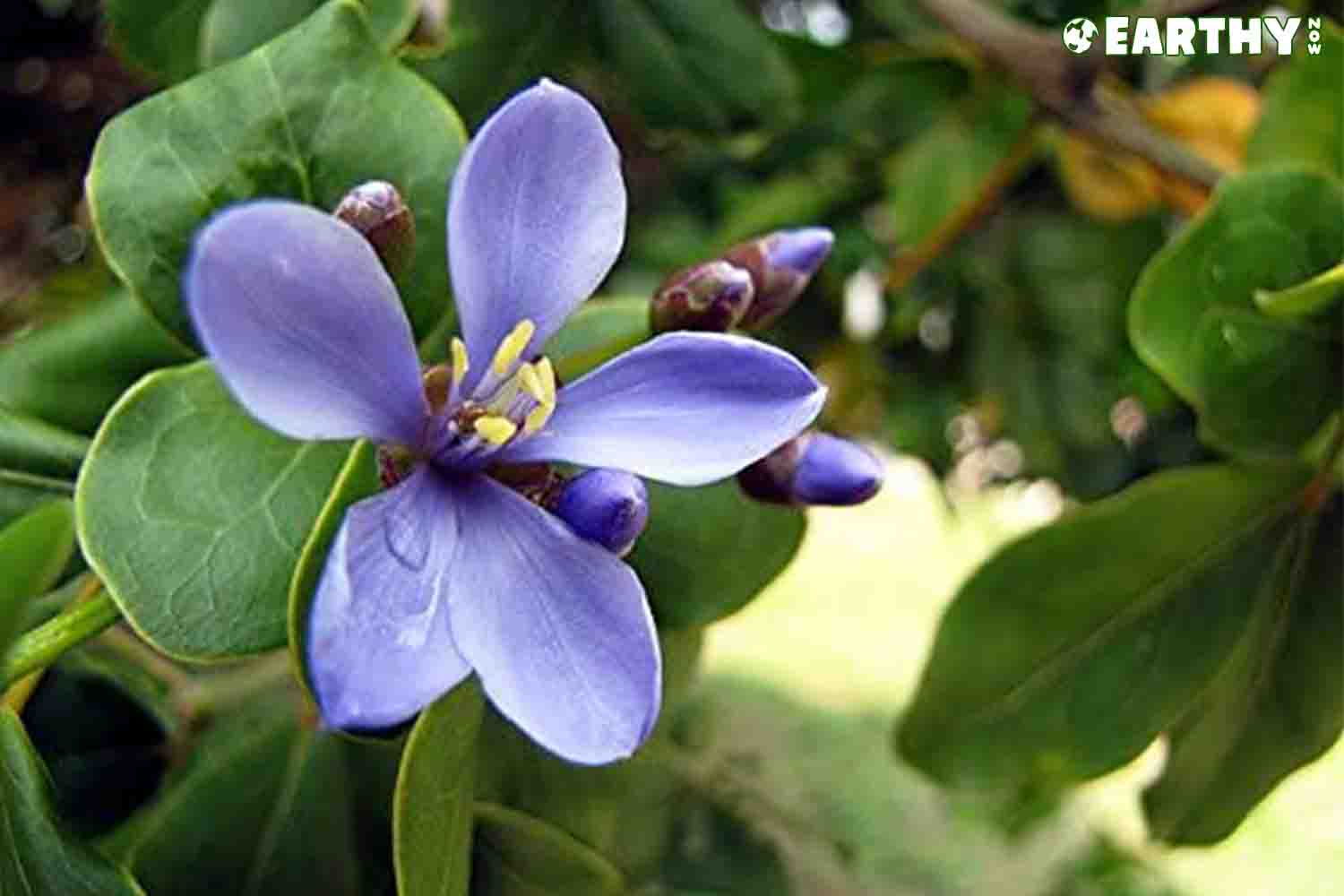If you’ve ever been so lucky as to step off an airplane into the warm air of a subtropical climate, you may have caught a whiff of the terpene guaiol. With its sweet, verdant scent, guaiol is especially high in the essential oil of the tropical guaiacum plant, but you can find it in many plants, including certain cannabis strains [1].
Here, we’ll help you better understand guaiol and explain why you may want to keep an eye out for this intriguing terpene.
What are terpenes?
At their core, terpenes are molecules responsible for determining a plant’s smell. Additionally, they serve the plant by giving off scents that protect it. For example, high concentrations of particular terpenes may serve as insect repellent, keeping a plant safe from being eaten by insects or other animals. In contrast, terpenes with attractive smells play a vital role in luring helpful insects to ensure the plant’s survival through pollination [2].
In the human realm, terpenes are ubiquitous in commercial fragrances, household items, food products, cosmetics, wellness products and other substances. Many cannabis enthusiasts associate terpenes with their favorite strains that offer specific smells, tastes, and other benefits.
New studies have begun to reveal the potential beneficial effects of many terpenes as researchers evaluate data and publish findings about their possible benefits, yet more research is needed before the science is settled [3].
What is guaiol?
With its liquid structure, the guaiol terpene is most prominent in the oily timber of the tropical guaiacum tree— a breed of evergreen trees mostly found in the Caribbean and other subtropical regions.
Yet guaiol, also called champacol, can also be found in coniferous trees such as cypress pine and other plants, including cannabis, lilac, nutmeg, cumin, tea tree, and apples. Along with its sharp, pine-like aroma, wood and rose notes are present in its pleasing bouquet [4].
Spanish Conquistadors brought guaiacum gum back to Europe from San Domingo, modern-day Haiti, and the Dominican Republic in the 1600s. By the late 1700s, the guaiacum gum extracted from the guaiacum tree was used to treat syphilis and given to women to help regulate menstruation [5].
Since then, the applications of guaiol have exploded into the market, where it has become a staple in household products, pharmaceuticals, beverages, food, and cosmetics.
Uses for and benefits of guaiol
For centuries of folk practice, guaiol has been used—via essential oils—as a natural remedy to treat coughs, congestion, and menstrual symptoms. Nowadays, it’s become a major component of many natural products and a feature in mainstream commercial manufacturing.
A primary terpene in fragrances, mosquito repellents, pharmaceuticals, cleaning agents, and other products, this lesser-known terpene has much to offer.
Additionally, this powerful terpene has shown promising results in laboratory tests with animals. More research is needed to determine if it might have similar outcomes in humans [6].
Guaiol terpene effects
In full-spectrum cannabis, the guaiol terpene has been associated with beneficial effects through the entourage effect. This phenomenon describes how guaiol and other terpenes and minor cannabinoids work synergistically in the endocannabinoid system to enhance the effects of cannabinoids such as CBD and THC [7].
Learn more in the Guide to CBD.
What is the entourage effect?
Originally proposed in 1999, the entourage effect describes a mechanism by which cannabis compounds such as terpenes and flavonoids, even in trace amounts, act synergistically with cannabinoids to modulate the overall effects of the plant [9], whether those may be mood-altering or not. It follows that terpenes add to the entourage effect because they are part of the overall composition of the plant material.
Ultimately, the potential benefits of specific terpenes may contribute to their interplay among other cannabis compounds.
Cannabis strains high in guaiol
Guaiol is one of the top 20 cannabis-derived terpenes. A few strains that boast a higher concentration than others include:
Sour Special Sauce – An Indica-dominant strain from Oregon CBD, Sour Special Sauce is a result of pairing Special Sauce with GG#4 Conversion. The strain is woody and fruity, spicy and sour with astringent berry and exotic flavors, plus a sour, dank earthiness.
Canna Cake – A Sativa-dominant strain with a big flavor, Canna Cake’s lineage results in a rich, spicy aroma and a tangy, sweet-piney, and citrus earthiness.
Kali Dog – A Sativa-dominant cross, Kali Dog’s influence from the Indica genetics gives this strain a balanced quality that some describe as uplifting and cerebral [8].
Sources of guaiol
Guaiol is found in high concentrations in the tropical guaiacum plant. However, it also occurs in
- Cannabis
- Cypress pine
- Other coniferous treea
- Nutmeg
- Cumin
- Lilacs
- Apples
- Tea trees [1]
Check out Earthy’s luxurious Soothing Relief Lotion
Final thoughts about guaiol
A feature that makes guaiol’s scent more nuanced than some other piney terpenes is its undertone of rose. Indeed, some people compare it to walking through a rose garden mulched with pine bark. It’s no wonder this terpene has recently grown in popularity! But it’s not only its calming scent that makes guaiol worth experiencing.
This rare terpene has medicinal potential that’s illuminated by its rich history of use in the guaiacum plant and other essential oils—all of which modern researchers are just beginning to gain a better understanding. Try this mighty terpene for yourself to experience its unique wonders firsthand.
Medical Disclaimer / Legal Disclaimer – Information is provided for educational purposes. It does not and is not intended to constitute legal advice or medical advice. We attempt to be accurate and up-to-date, but the legality of cannabinoids and the science of cannabis are evolving. The author is neither a legal professional nor a medical expert. Before buying or using any products, you should check with your local authorities and medical providers.
References
- Way of Leaf: Guaiol Terpene
- Wikipedia: Terpene
- Therapeutic Applications of Terpenes on Inflammatory Diseases
- Leafly – Guaiol Terpene
- ASC Labs – Guaiol
- Cayman Chemicals – Guaiol
- Understanding Terpenes: Guaiol
- Leafly Strains: Kali Dog
- Wikipedia: The Entourage Effect
- PubChem: Guaiol
- Leafly: Guaiol Terpene






